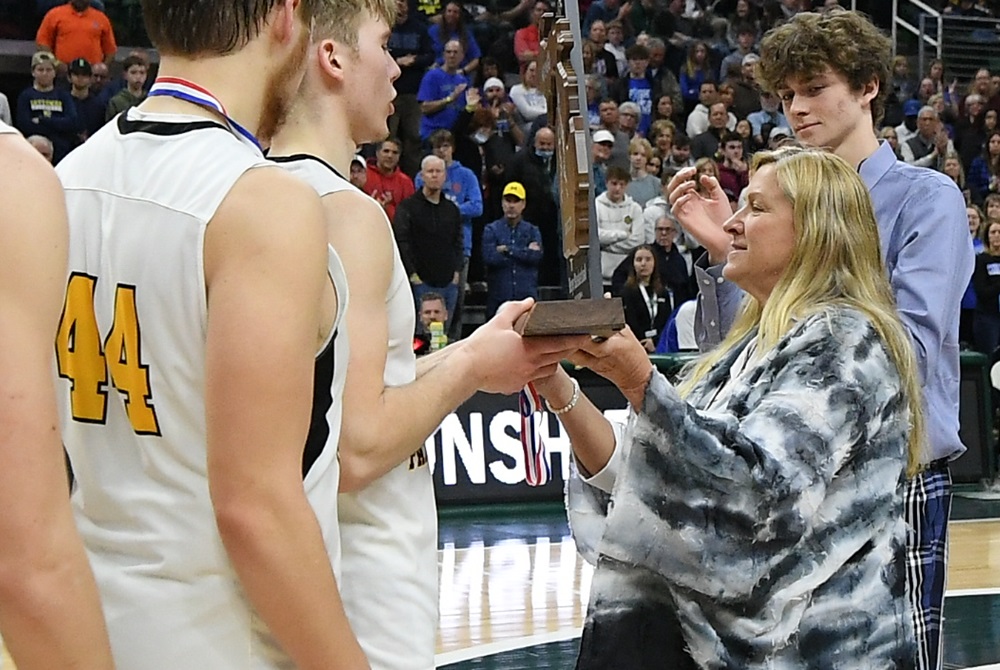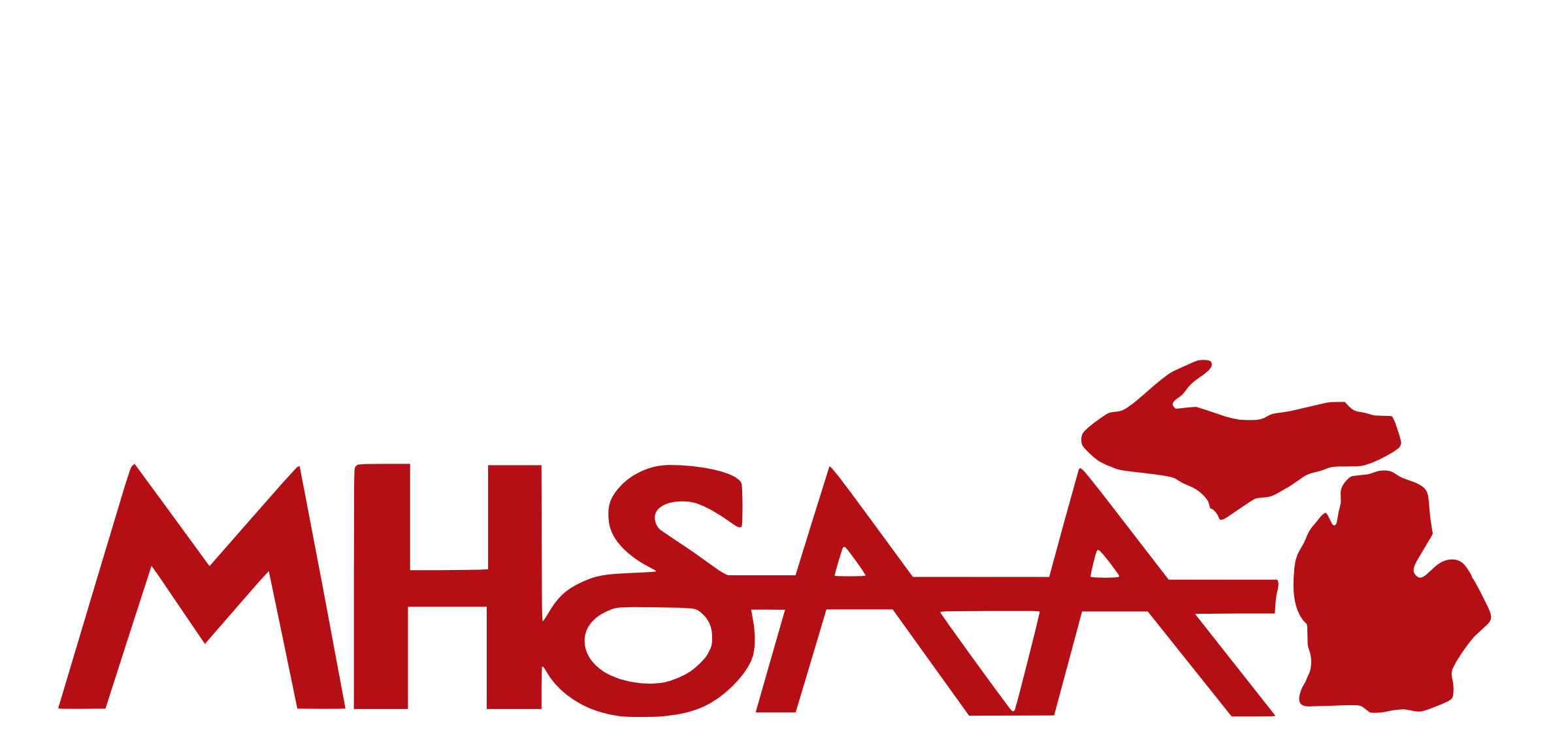
Making (Health) Histories Every Year
July 23, 2015
By Rob Kaminski
MHSAA benchmarks editor
Tom Minter, recently retired from the MHSAA as assistant director, wore many hats while serving the Association and donned official’s gear in numerous sports outside of business hours.
But one of his finest refereeing efforts might have come during the 2009-10 and 2010-11 school years when he guided approximately 60 individuals representing 25 medical and professional organizations through an arduous process to upgrade the antiquated Physical Form to what is the standard today: the Pre-participation Physical Examination/Health History Form.
The form highlighted Stage 1 of the MHSAA’s 4 Hs of Health and Safety – Health Histories – and the current form is much more comprehensive, answering questions previously not asked during the quicker, more brief, evaluations.
Sudden cardiac death claims the lives of more than 300 Michigan children and young adults between the ages of 1-39 years annually. Yet, many of these deaths could be prevented through screening, detection, and treatment. One such way to detect high risk conditions that predispose to SCDY is through pre-participation sports screening of student-athletes, and the current physical form provides a mechanism.
While much more detailed, schools report that parents are more than willing to take the extra time and effort to complete the lengthier version.
“When the expanded form came out, people kiddingly made comments about its length; yet in today's day and age everyone understands we need all the information we can cultivate regarding health histories of our student athletes,” said Mark Mattson, athletic director at Traverse City Central.
Down state, feelings have been similar. “We don’t have a problem at all here,” said Anna Devitt, athletic secretary at Hartland High School. “Our parents take care of it, and haven’t balked at the length at all.”
Both agree, and are joined by many others across the state, that the next logical step is for the form to be converted to a fillable, online document so that records can be accessed by those in need via mobile, laptop or desktop.
Thus, in the “No H left behind” mantra that the MHSAA has assumed, an electronic option of the Health History form is in the early planning stages.
“As an increasing number of our schools strive to be ‘paper-free,’ or at least as much so as possible, it is time to re-invent the delivery method for perhaps our most downloaded or distributed document,” MHSAA Executive Director Jack Roberts said. “Once again, as we move forward with our ‘Heart’ initiative for the coming school year, we are also intent on bringing other projects up to speed.”
The masses are certainly enthused.
“That would be heavenly. An online version that would prevent people from submitting the forms until all the required information was in place would be fantastic,” said Mattson, who has had to turn back, or hold out students while waiting for completed forms, whether at Marquette, Maple City Glen Lake, or his current post in Traverse City. “It’s always been the same; people move too quickly and overlook required fields. It would prevent two things: one, having to hold kids out while waiting for a signature, and two, prevent parents from having to drive in to the athletic office to sign or fill in that last field. We’d know we were getting a completed form.”
At Hartland, where athletic director Jason Reck created an online emergency contact form, a system is in place which allows coaches, administrators and trainers to share necessary data for all student-athletes in addition to the MHSAA forms.
“Our parents love the online emergency contact form, and we require them to fill it out every season, not just once a year,” Devitt said. “Sometimes an athlete gets injured during one season and the next season's coach wants to know about it.”
The information on the form is populated into an Excel spreadsheet which Reck, Devitt, the school trainer and all coaches can access. They can tailor the data by sport and pull it to their mobile devices.
“We’re trying to go completely paperless, and the MHSAA physical form would be another step,” Devitt said. “Our parents and doctor’s offices would love it.”

Care for Students Drove Forsythe Honoree Isom's Work for Nearly 40 Years
By
Geoff Kimmerly
MHSAA.com senior editor
March 10, 2025
For 39 years, Kris Isom poured herself into education and educational athletics as a teacher, coach, class advisor, athletic director, league president and advocate statewide as a remember of the Representative Council of the Michigan High School Athletic Association.
To celebrate nearly a lifetime of contributions – including several that continue to impact this state’s student-athletes – Isom has been selected as the 2025 honoree for the MHSAA’s Charles E. Forsythe Lifetime Achievement Award.
The annual award is in its 48th year and named after past MHSAA Executive Director Charles E. Forsythe, the Association's first full-time and longest-serving chief executive. Forsythe Award recipients are selected each year by the MHSAA Representative Council, based on an individual's outstanding contributions to the interscholastic athletics community at the local, regional and statewide levels. Isom will be honored during the MHSAA Boys Basketball Division 4 Final on March 15 at Michigan State University’s Breslin Student Events Center.
 Isom retired at the close of the 2023-24 school year after 38 at Adrian Madison and one at Clinton, where she attended high school and then began her teaching career before moving to Madison and becoming a pillar locally and statewide for nearly four decades.
Isom retired at the close of the 2023-24 school year after 38 at Adrian Madison and one at Clinton, where she attended high school and then began her teaching career before moving to Madison and becoming a pillar locally and statewide for nearly four decades.
In addition to serving as part of the MHSAA’s Council from 2008-23, Isom served as the president of the Tri-County Conference for more than two decades, on top of all the daily responsibilities that come with serving as a school athletic director. She also was one of the few athletic directors who also coached every year at some level, leading teams in basketball, volleyball, sideline cheer, softball and track & field.
“What I miss the most is the interaction with the kids. The coaching of course, but then everyday them coming into the office or giving me a hug or asking me what’s up,” Isom said. “It’s not always the athletes you intermingle with; it’s the kids in need, and even today when I see them or run into them, I get a hug or thank you, and that makes it all worth it.”
Isom has been recognized several times in the past for her contributions. She received the MHSAA’s Women In Sports Leadership Award in 2019, after previously being honored with an MHSAA Allen W. Bush Award in 2016 to recognize her behind-the-scenes contributions to school sports. She also was named Region 6 Athletic Director of the Year in 2000 by the Michigan Interscholastic Athletic Administrators Association (MIAAA).
During her time at Madison, she saw several of her school’s athletic programs enjoy success. Among recent highlights, Madison’s competitive cheer team finished Division 4 runner-up in 2022, the girls track & field team won a Lower Peninsula Division 3 Finals championship in 2017 and finished runner-up in 2016, and the 2016 volleyball team reached the Class C Semifinals with her daughter Rachel a contributor.
Kristen Isom indeed was a significant contributor to MHSAA work from a behind-the-scenes point of view, as she was a frequent host of District, Regional and Quarterfinal competitions and also MHSAA Coaches Advancement Program (CAP) sessions at her school. She also has been a longtime member of the MIAAA and National Interscholastic Athletic Administrators Association.
“For nearly four decades, Kristen Isom served as an excellent example of how to navigate the daily challenges of athletic administration while making a difference in the lives of her students and an impact on educational athletics on a larger scale as well,” said MHSAA executive director Mark Uyl. “She often showed a way forward as the MHSAA worked through complex topics, and always with the best interests of students first and foremost.”
A graduate of Clinton High School, Isom received her bachelor’s degree in science and teaching certification in physical education and health in 1984 from Michigan State University. She earned her master’s in elementary education in 1986 from Eastern Michigan University and also has completed graduate courses from Fresno Pacific University.
In addition to the MIAAA and NIAAA, Isom also has been a member of the Michigan Association for Health, Physical Education, Recreation and Dance (MAHPERD) and the Michigan State University Alumni Association. She’s been active with the Clinton United Church of Christ and Land & Lakes Ladies Club in various service efforts, and participated in local Meals on Wheels and roadside cleanup projects.
Isom is married to her husband Jerry, and she’s also maintained her real estate license for 30 years and is continuing in that work.
“Obviously (the Forsythe Award) being a high achievement, and being nominated by your peers, it doesn’t get any better than that. They know everything that goes into this job,” Isom said. “I think, like my daughter said, most people said you got paid to go watch games – that’s a perception many people have and that’s OK, because everybody’s job has ups and downs.
“But to have done something 38 years, at the same place, there must have been something you’re doing right, and you must have enjoyed it. And it’s hard to find that. It kinda makes you feel like everything you’ve done was worthwhile, that you made a difference in someone’s life.”
Past recipients
1978 - Brick Fowler, Port Huron; Paul Smarks, Warren
1979 - Earl Messner, Reed City; Howard Beatty, Saginaw
1980 - Max Carey, Freesoil
1981 - Steven Sluka, Grand Haven; Samuel Madden, Detroit
1982 - Ernest Buckholz, Mt. Clemens; T. Arthur Treloar, Petoskey
1983 - Leroy Dues, Detroit; Richard Maher, Sturgis
1984 - William Hart, Marquette; Donald Stamats, Caro
1985 - John Cotton, Farmington; Robert James, Warren
1986 - William Robinson, Detroit; Irving Soderland, Norway
1987 - Jack Streidl, Plainwell; Wayne Hellenga, Decatur
1988 - Jack Johnson, Dearborn; Alan Williams, North Adams
1989 - Walter Bazylewicz, Berkley; Dennis Kiley, Jackson
1990 - Webster Morrison, Pickford; Herbert Quade, Benton Harbor
1991 - Clifford Buckmaster, Petoskey; Donald Domke, Northville
1992 - William Maskill, Kalamazoo; Thomas G. McShannock, Muskegon
1993 - Roy A. Allen Jr., Detroit; John Duncan, Cedarville
1994 - Kermit Ambrose, Royal Oak
1995 - Bob Perry, Lowell
1996 - Charles H. Jones, Royal Oak
1997 - Michael A. Foster, Richland; Robert G. Grimes, Battle Creek
1998 - Lofton C. Greene, River Rouge; Joseph J. Todey, Essexville
1999 - Bernie Larson, Battle Creek
2000 - Blake Hagman, Kalamazoo; Jerry Cvengros, Escanaba
2001 - Norm Johnson, Bangor; George Lovich, Canton
2002 - John Fundukian, Novi
2003 - Ken Semelsberger, Port Huron
2004 - Marco Marcet, Frankenmuth
2005 - Jim Feldkamp, Troy
2006 - Dan McShannock, Midland; Dail Prucka, Monroe
2007 - Keith Eldred, Williamston; Tom Hickman, Spring Lake
2008 - Jamie Gent, Haslett; William Newkirk, Sanford Meridian
2009 - Paul Ellinger, Cheboygan
2010 - Rudy Godefroidt, Hemlock; Mike Boyd, Waterford
2011 - Eric C. Federico, Trenton
2012 - Bill Mick, Midland
2013 - Jim Gilmore, Tecumseh; Dave Hutton, Grandville
2014 - Dan Flynn, Escanaba
2015 - Hugh Matson, Saginaw
2016 - Gary Hice, Petoskey; Gina Mazzolini, Lansing
2017 - Chuck Nurek, Rochester Hills
2018 - Gary Ellis, Allegan
2019 - Jim Derocher, Negaunee; Fredrick J. Smith, Stevensville
2020 - Michael Garvey, Lawton
2021 – Leroy Hackley Jr., Byron Center; Patti Tibaldi, Traverse City
2022 – Bruce Horsch, Houghton
2023 – Karen Leinaar, Frankfort
2024 – Sean Jacques, Calumet
PHOTO Retired Adrian Madison athletic director Kristen Isom presents the Division 4 finalist trophy to Ewen-Trout Creek in 2022. (Photo by Andrew Frushour.)

